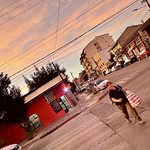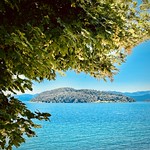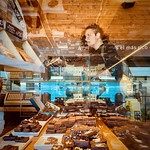Across the void to Bariloche
Like manufacturing, travel has succumbed to the joys of the just-in-time supply chain. Availability of transport and accommodation is tightly matched to demand. For the same reason that last minute travel has disappeared, as there are now only unexpected surpluses due to unexpected events, like, say, a terrorist attack, waiting with booking anything has become more and more risky.
Our three week journey was going to be on a tight schedule. I had wanted to visit Welsh Argentina, but we forwent that, when we discovered a direct connection between El Calafate and Bariloche, over 1000km apart in a straight line. It meant skipping two, or three, stops, but also changed our schedule from ‘impossible’ to just ‘very tight’.
I was aware of the economic challenges Argentina was, once more, going through, but contrary to the last time, I had not seen any mentioning of a parallel money market. Yet, when I booked the ticket between El Calafate and Bariloche online, the only one on our journey both originating and terminating in Argentina, I balked at the price, while also surprised that no tickets yet had been booked on the bus we were wanting to take.
But, with this connection only running every few days, our options were going to be limited. I bit the bullet and bought the ticket.
On the plus side, we were going to have two seats on the top deck, at the front, and the bus was ‘leito’, meaning the seats are supposed to fold back to a comfortable almost horizontal position.
Then, of course, in passing, in Ushuaia, we learnt that also during this economic downturn, the ‘blue dollar’ existed, that is, the unofficial street rate for foreign currency that’s only just short of being official, but also makes a difference of nearly 100% of the official rate.
So, the price I paid for our ticket, at the official rate, was double the street price.
Then, as we entered the bus, we found that the bus wasn’t actually ‘leito’, with seats only folding partially. And, where I had expected meal service on board, something that was common only 8 years ago, we got a grand total of zero snacks during our 28 hour journey.
Saving grace, hopefully, was going to be the scenery, said to be stunning on route 40, connecting the far north with the Deep South, and coming in at over 5000 kilometres.
But, though interesting, the majority of it was pampa, or steppe. A bit… monotonous.
On the bus, two boys in the seats next to us were traveling around the region. Now, they were going fishing together in the Lake District not far from Bariloche. But, over the last months, they had been, on and off, part of a larger loosely connected group, maintaining and building trails in the national parks strewn throughout Argentina. Their chatter disclosed an alternate version of reality, in a way under the surface, disconnected from the regular tourist crowd, more reminiscent of backpacking before being in our now hyperconnected world.
It sounded like, in their world, last minute travel might just still exist.
The town of Bariloche was nice enough. With a hammering of chocolate manufacturers and chalets everywhere, it felt like a lower-end version of some Swiss town, on the edge of a pretty Alpine lake.
We rented a bike to tour the shore and visit a few beaches, though the water was very fresh.
The bicycle rental had a sign with posted prices for the next few months, heavily inflated for each next month, while previous months had been whited out.









